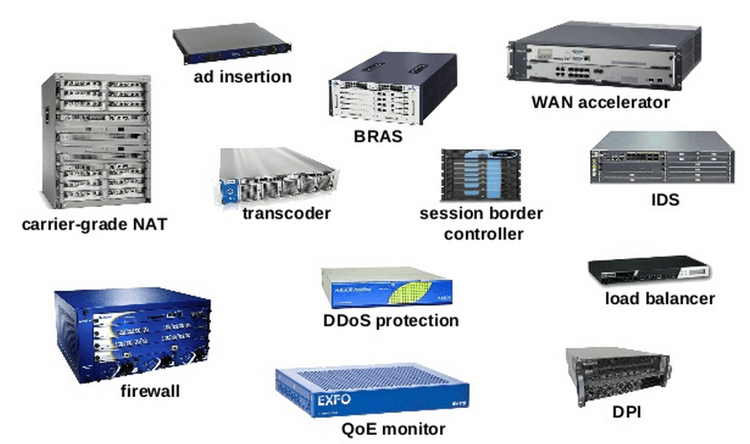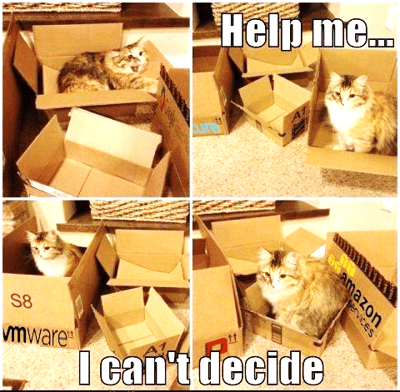If you’re like most IT shops, you have a place for testing out new products, technologies, and applications. You may call it your lab, your skunkworks, or your Area 51. (If you have a different name, share it in a reply to this post.) Your lab is where you separate truth from hype. It’s where you make sure things work in your environment, on your equipment, with your team. CloudBolt’s powerful and intuitive cloud management platform makes a great addition to your lab. Keep reading to find out why. Or to get started right away, just
Gathering Clouds Perhaps you’re just getting started with cloud computing, or maybe you’re testing out multiple clouds, public and private. Either way, CloudBolt’s powerful and intuitive cloud management platform can help. CloudBolt serves as a manager-of-managers to provide single-pane-of-glass visibility and control. We integrate a wide range of virtualization, cloud, automation, and orchestration tools and technologies.
Perhaps you’re just getting started with cloud computing, or maybe you’re testing out multiple clouds, public and private. Either way, CloudBolt’s powerful and intuitive cloud management platform can help. CloudBolt serves as a manager-of-managers to provide single-pane-of-glass visibility and control. We integrate a wide range of virtualization, cloud, automation, and orchestration tools and technologies.
Our cloud management platform lets you test a variety of configurations on the back-end while providing a consistent end-user front-end. This can be very handy for vendor bakeoffs. For example, you can spin up an Apache Tomcat environment in your own data center as well as in a public cloud provider based in, say, Singapore and compare provisioning time, system performance, and user experience.
Because CloudBolt coordinates each cloud integration, you don’t have to keep up with each vendor’s terminology, APIs, and quirks. You just set up the initial integration for each provider and then lather, rinse, and repeat. Instead of becoming locked into a particular vendor’s offerings, you can select the best environment for each workload. We even discover and integrate with your existing deployments, and we stay in sync regardless of whether you make changes using CloudBolt or through vendor-specific tools.
Free, as in Beer
CloudBolt is pleased to announce that our award winning cloud platform is now available for free for up to 25 VMs in non-production lab environments. Why? Because we’re confident in the value of our product. We use it every day, and it enables us to be highly productive and cost-effective. We believe it will do the same for you.
To get started, just go to our download page and click the link to
Then fill out the license request and we’ll email you a free license that never expires. System prerequisites and installation instructions are available on our documentation site. When you've finished installing CloudBolt, follow the Getting Started Guide and you’ll be up and running in minutes. Contact us if you need any assistance. To jumpstart your CloudBolt deployment, schedule a demo and we’ll walk you through the features that matter most to you.


 Imagine a data pipeline of that passes through all these devices. How many times must a packet be opened, inspected, and acted upon? How many device operating systems and interfaces do systems administrators need to know/learn? How many opportunities are there for misconfiguration or device failure? What happens when rules on different boxes conflict? Who can troubleshoot traffic that passes through all these devices?
Imagine a data pipeline of that passes through all these devices. How many times must a packet be opened, inspected, and acted upon? How many device operating systems and interfaces do systems administrators need to know/learn? How many opportunities are there for misconfiguration or device failure? What happens when rules on different boxes conflict? Who can troubleshoot traffic that passes through all these devices? By contrast, SDN promises a global network view. Functional complexity is managed at the network edge, while the core primarily focuses on moving packets. As
By contrast, SDN promises a global network view. Functional complexity is managed at the network edge, while the core primarily focuses on moving packets. As 
 It ran applications for a British tea and catering company. In the decades that have followed, information technology
It ran applications for a British tea and catering company. In the decades that have followed, information technology IT has long had a paternalistic attitude towards end users. “They need us”, they say, or “we’re just keeping them safe.” But unlike the child that’s eventually allowed to go off on their own, most IT departments won’t let go. In response, many end users – developers, line of business owners, and the like – look for unsanctioned alternatives. They create islands of “
IT has long had a paternalistic attitude towards end users. “They need us”, they say, or “we’re just keeping them safe.” But unlike the child that’s eventually allowed to go off on their own, most IT departments won’t let go. In response, many end users – developers, line of business owners, and the like – look for unsanctioned alternatives. They create islands of “













 CloudBolt Software today announced that the company has been selected as a Red Herring Top 100 North America winner. The Red Herring Top 100 North America recognizes leading private companies in North America, celebrating these startups’ innovations and technologies across their respective industries.
CloudBolt Software today announced that the company has been selected as a Red Herring Top 100 North America winner. The Red Herring Top 100 North America recognizes leading private companies in North America, celebrating these startups’ innovations and technologies across their respective industries.